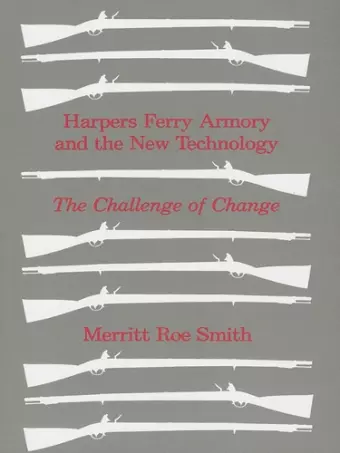Harpers Ferry Armory and the New Technology
The Challenge of Change
Format:Paperback
Publisher:Cornell University Press
Published:30th Apr '80
Currently unavailable, and unfortunately no date known when it will be back

Focusing on the day-to-day operations of the U.S. armory at Harpers Ferry, Virginia, from 1798 to 1861, this book shows what the "new technology" of mechanized production meant in terms of organization, management, and worker morale. A local study of much more than local significance, it highlights the major problems of technical innovation and social adaptation in antebellum America. Merritt Roe Smith describes how positions of authority at the armory were tied to a larger network of political and economic influence in the community; how these relationships, in turn, affected managerial behavior; and how local social conditions reinforced the reactions of decision makers. He also demonstrates how craft traditions and variant attitudes toward work vis-à-vis New England created an atmosphere in which the machine was held suspect and inventive activity was hampered.Of central importance is the author's analysis of the drastic differences between Harpers Ferry and its counterpart, the national armory at Springfield, Massachusetts, which played a pivotal role in the emergence of the new technology. The flow of technical information between the two armories, he shows, moved in one direction only— north to south. "In the end," Smith concludes, "the stamina of local culture is paramount in explaining why the Harpers Ferry armory never really flourished as a center of technological innovation."Pointing up the complexities of industrial change, this account of the Harpers Ferry experience challenges the commonly held view that Americans have always been eagerly receptive to new technological advances.
Among the pleasures of this extremely well-written book are the in-depth character studies that Smith provides. Important leaders like James Stubblefield, Colonel Roswell Lee, John H. Hall, and Edward Lucas Jr. are portrayed with critical finesse.... This study is an important contribution to both urban and technological history.
* American Historical Review *An excellent book that will be required reading for students and scholars interested in the emergence of the 'American System' of interchangeable manufacture and the assimilation of that process at the national armory at Harpers Ferry.... If you are going to purchase one book this year, make it this one; you will not be disappointed in your investment.
* Technology and Culture *Smith's book confronts one of the central issues in the history of American technology: how, from about 1800 to 1860, did the United States change from being technologically dependent on Europe to a leader in many fields. In choosing a national armory and the machine tool industry as his examples, he tills well-cultivated but still fertile ground. In challenging the notion that American workers enthusiastically accepted the mechanization of the work processes, he breaks nearly virgin soil. The harvest is bountiful.... Smith has written a fine book, and few will read it without learning something interesting and important.
* Journal of American History *This is a superb book, based on exhaustive archival research, imaginatively structured, clearly and forcefully written. It is easy to understand why Smith's study should be so highly prized among historians.
* Journal of Economic Histo- Winner of •Winner of the Frederick Jackson Turner Award (Org.
ISBN: 9780801491818
Dimensions: 229mm x 152mm x 21mm
Weight: 907g
364 pages